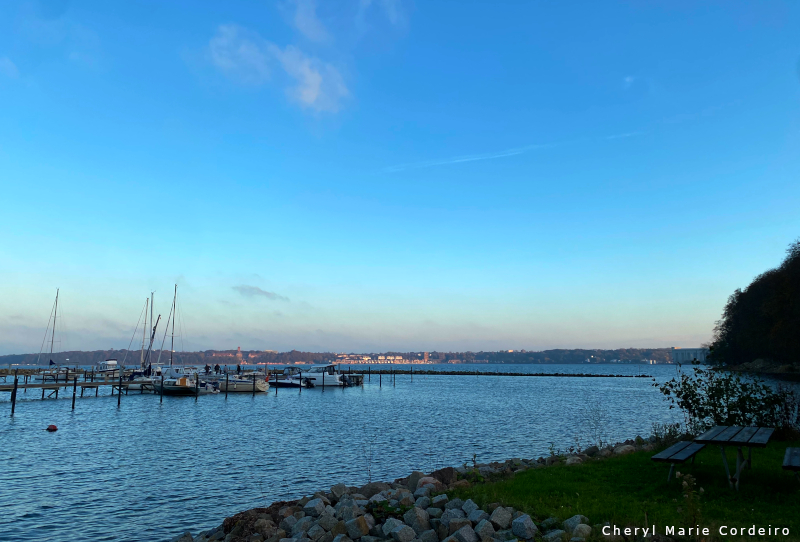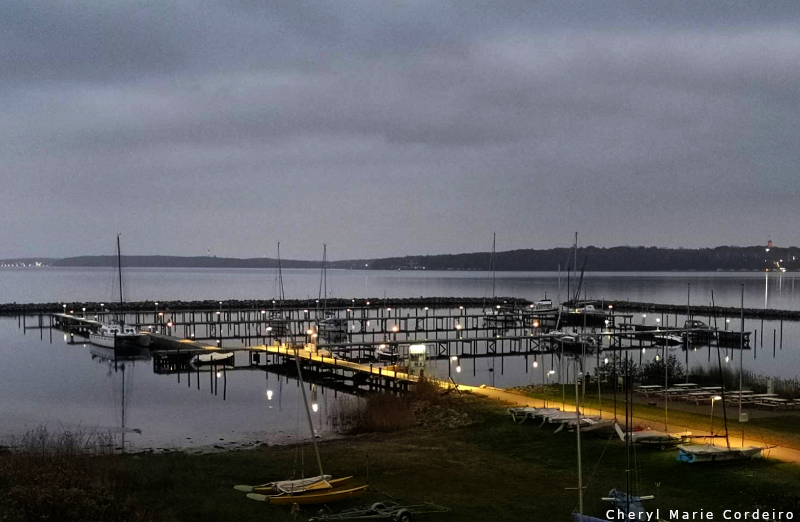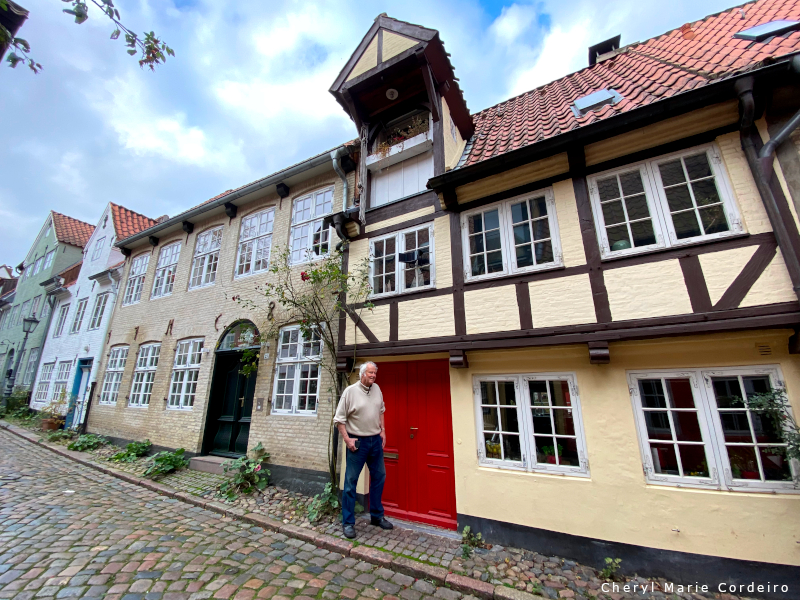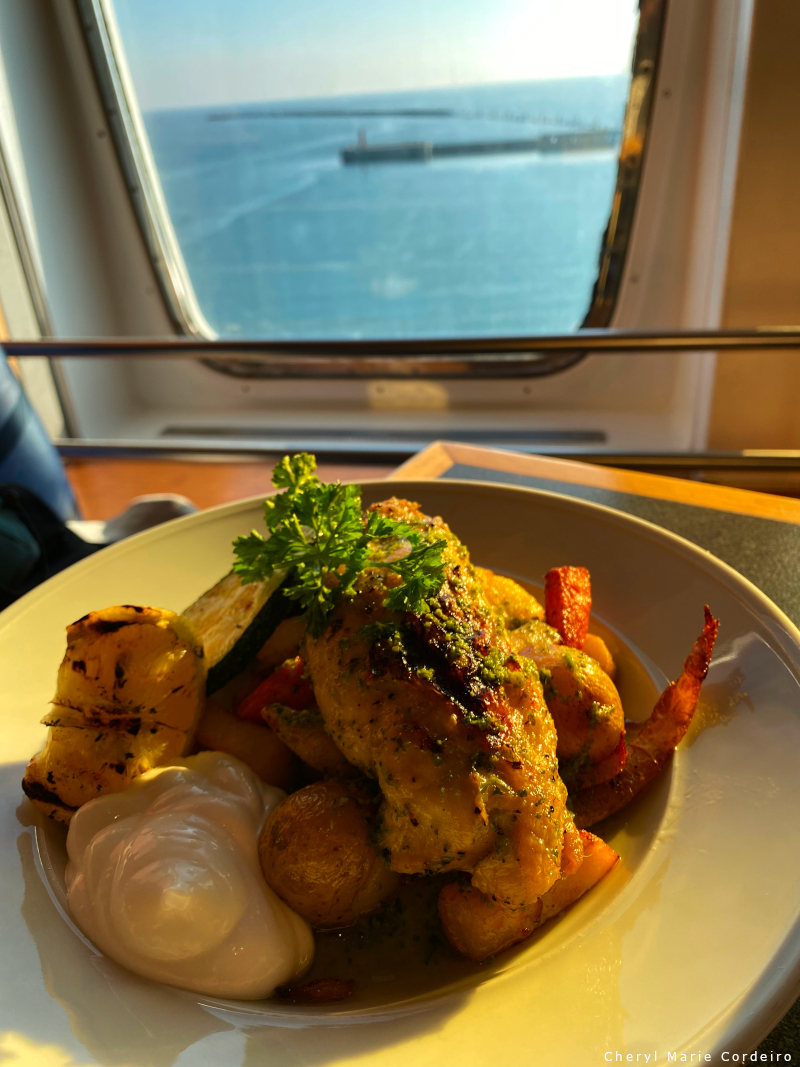
Smørrebrød and a cappuccino, Frederikshavn, Denmark.
Text & Photo © CM Cordeiro & , JE Nilsson 2024
At the recent EUSBSR Annual Forum 2024, I met many individuals passionate about and committed to restoring the Baltic Sea. And I can see why—the coastal regions of the Baltic Sea can easily find their way into your heart. With its striking landscapes and vibrant maritime culture, the region offers experiences that go beyond mere sightseeing. The rich maritime biodiversity invites not just observation but immersion. My recent visit to Wassersleben Strand and Flensburg, Germany, reinforced my appreciation for how these areas balance tourism with ecological responsibility. However, with popularity comes the challenge of maintaining a delicate balance between economic growth through tourism and environmental conservation. It was with this perspective that I spent my time in Wassersleben and Flensburg, observing how policies and practices are implemented to shape sustainable tourism and understanding their significance for both locals and visitors alike.
Policies and Practices for Sustainable Tourism
One of the most inspiring aspects of the Baltic Sea’s approach to sustainability is the HELCOM Baltic Sea Action Plan (BSAP) [1]. This initiative by the Helsinki Commission (HELCOM) aims to restore the ecological health of the Baltic Sea by addressing pollution, protecting biodiversity, and encouraging the sustainable use of marine resources. During my visit to Flensburg, I witnessed local projects that embraced measures to limit nutrient runoff from agriculture, manage harmful substances, and create protected areas to balance tourism with conservation.
Nature-based solutions (NBS) are particularly fascinating for their effectiveness and simplicity. At Wassersleben Strand, coastal vegetation plays a crucial role in stabilizing sand and supporting local wildlife. Marram grass (Ammophila arenaria) [2], known for its deep root systems, binds sand particles together, reducing erosion and maintaining dune structure. This vegetation also provides habitat for various species, contributing to the area’s biodiversity. Implementing such nature-based solutions is essential for preserving coastal ecosystems while accommodating tourism.
Flensburg’s rich maritime heritage significantly contributes to its local economy, supported by historical sites, cultural events, and waterfront attractions. Although specific data on the direct impact of responsible tourism on Flensburg’s businesses is limited, the emphasis on sustainable practices attracts visitors seeking authentic and eco-friendly experiences. This approach boosts local economies by encouraging patronage of family-run guesthouses and artisanal shops.
The Museumswerft Flensburg exemplifies how eco-friendly practices can be promoted through education. Their Akademie offers workshops, themed days, and events that focus on traditional boatbuilding and maritime heritage, emphasizing sustainable techniques and environmental stewardship. These programs engage both locals and visitors in preserving maritime culture and foster a deeper appreciation for the ecological balance of the Baltic Sea region.
Successful Initiatives in Sustainable Tourism
Sustainable tourism in the Baltic Sea region is more than an idea—it is actively pursued through targeted efforts. Notable examples include:
- Rügen Island, Germany: Recognized for its efforts to balance tourism with conservation, the island has implemented dune protection measures and managed visitor access to minimize ecological impact. Educational initiatives inform tourists about the importance of preserving dune ecosystems. [3]
- Saaristomeri (Archipelago Sea), Finland: The Finnish government has adopted strategies to regulate tourism and support conservation in the Archipelago Sea. Efforts include managing visitor numbers to reduce strain on sensitive habitats and involving local communities in resource stewardship. [4]
- Pärnu Bay, Estonia: Collaborative projects involving local authorities, environmental organizations, and fishermen focus on sustainable tourism and responsible fishing. These projects aim to protect fish stocks and support marine ecosystems while maintaining the bay’s tourist appeal. [5]
Cultural and Economic Perspectives
Tourism in the Baltic Sea region is more than just a source of income—it is a way for people to share their traditions, stories, and way of life. In places like Flensburg and Schleswig-Holstein, the deep-rooted connection communities have with the sea is palpable. Maritime festivals, bustling markets, and museums narrate the stories of generations shaped by coastal living.
Community involvement is key [6]. For local communities, sustainable tourism is not just an objective—it is essential. Governments understand the importance of involving locals in decision-making processes. Whether through beach monitoring or leading guided eco-tours, local participation ensures that tourism aligns with both environmental and cultural values. This serves as a powerful reminder that responsible tourism is not only about what visitors take from a place but also what they contribute.
The collective actions I observed while traveling between Denmark and Germany offered a broader understanding of the effort involved in conserving and restoring the Baltic Sea’s charm. These initiatives ensure that the region remains a beloved destination for years to come. The commitment to blending environmental stewardship with economic growth [7] proves that sustainability and tourism can coexist beautifully.








References
- [1] HELCOM (2021). Baltic Sea Action Plan: 2021 update. https://helcom.fi/wp-content/uploads/2021/10/Baltic-Sea-Action-Plan-2021-update.pdf
- [2] de la Peña, E., Karssen, G., & Moens, M. (2007). Distribution and diversity of root-lesion nematodes (Pratylenchus spp.) associated with Ammophila arenaria in coastal dunes of Western Europe. Nematology: International Journal of Fundamental and Applied Nematological Research, 9(6), 881–901. https://doi.org/10.1163/156854107782331289
- [3] Panzer-Krause, S. (2017). Un-locking unsustainable tourism destination paths: the role of voluntary compliance of tourism businesses with sustainability certification on the island of Rügen. Zeitschrift Für Wirtschaftsgeographie, 61(3), 174–190. https://doi.org/10.1515/zfw-2017-0013
- [4] Viirret, E., Raatikainen, K., Fagerholm, N., Käyhkö, N., & Vihervaara, P. (2019). Ecosystem Services at the Archipelago Sea Biosphere Reserve in Finland: A Visitor Perspective. Sustainability, 11(2), 421. https://doi.org/10.3390/su11020421
- [5] HELCOM. (2009). Biodiversity in the Baltic Sea: An integrated thematic assessment on biodiversity and nature conservation in the Baltic Sea (Baltic Sea Environment Proceedings No. 116B). https://helcom.fi/wp-content/uploads/2019/08/BSEP116B.pdf
- [6] Brooks, C., Waterton, E., Saul, H., Renzaho, A., & Wut, T. M. (2023). Exploring the relationships between heritage tourism, sustainable community development and host communities’ health and wellbeing: A systematic review. PloS One, 18(3), e0282319–e0282319. https://doi.org/10.1371/journal.pone.0282319
- [7] Domenech, T., & Bahn-Walkowiak, B. (2019). Transition Towards a Resource Efficient Circular Economy in Europe: Policy Lessons From the EU and the Member States. Ecological Economics, 155, 7–19. https://doi.org/10.1016/j.ecolecon.2017.11.001